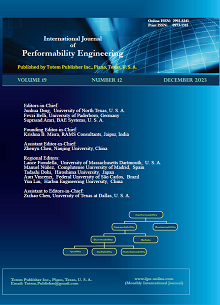-
Enriched Diagnosis of Osteoporosis using Deep Learning Models
- Saumya Kumar, Puneet Goswami, and Shivani Batra
-
2023, 19(12):
824-833.
doi:10.23940/ijpe.23.12.p7.824833
-
 Abstract
Abstract
 PDF (742KB)
PDF (742KB)

-
References |
Related Articles
Billions of people all over the globe suffer from osteoporosis, the second most prevalent bone condition after arthritis. Osteoporosis is brought on by a decline in bone mineral density, which can cause discomfort, deformity, injuries, and, in extreme instances, fatalities. Although DXA is used to diagnose it, its high price, limited availability, and erratic BMD values make it unreliable. The diagnoses have significantly improved owing to computer-aided diagnosis. A precise diagnosis of the condition may be made using deep learning-based networks, which have demonstrated cutting-edge outcomes in the diagnostic sector. Under the transfer learning methodology, this research investigates the performance of known neural network designs with the objective of osteoporosis diagnosis. The ability to distinguish between x-rays of healthy individuals and those obtained from individuals with osteoporosis has been tested using eight well-known ImageNet pre-trained models to provide a thorough comparison. 372 X-rays, divided into training and test sets, in the investigations. Standard evaluation parameters (such as accuracy, precision, recall and f1-score) have been calculated for all architectures, and the majority of designs performed significantly well, with the highest achieving an average accuracy of up to 86.36% when distinguishing the specified classes.

